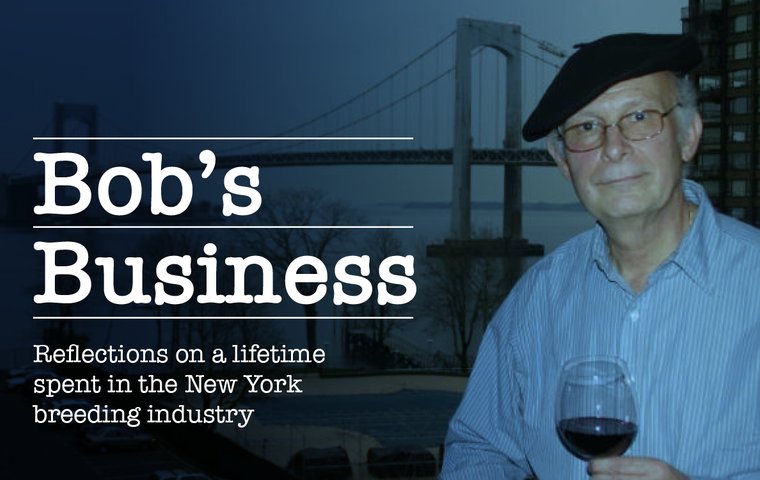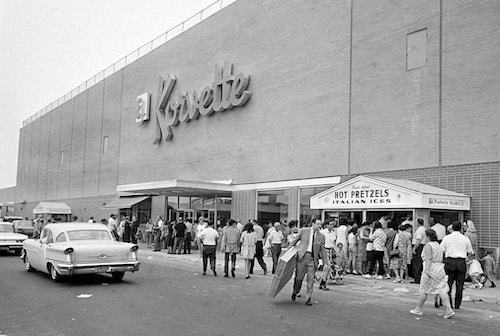
In the latest instalment of his mini-series, New York stalwart Robert D. Fierro recalls how he moved from tax advisor to bloodstock analyst to breeding his first horse
The research your correspondent has put into developing this series has generated the conclusion that 1981 was a watershed moment in the development of the New York Thoroughbred breeding program. What was somewhat shocking is that yours truly was lucky enough to be part of the critical path links.
That spring, your correspondent was asked to review a potential limited partnership plan that had been developed by lawyers and accountants for Raymond Karlinsky and Arthur Levien, two New York seniors who bred and raced a modest group of horses under the nom-de-course Bette Karlinsky Racing Stable.
We were selected because at the time it was generally acknowledged in the financial world that our best-selling book about tax shelters (as well as many related articles over the previous half-decade) gave us special insight into evaluating such investments.
While their Thoroughbred exploits might have been modest, Ray and Arthur had been hugely successful in business for several decades. It is generally acknowledged that Karlinsky ‘invented’ the concept of re-insurance, which rocked some parts of the financial world (Google it!)
 Levien had been a partner of one of the first discount department store chains in the country, E.J. Korvette, a name which most residents of New York City hypothecated stood for ‘eight Jewish Korean War veterans’. This was not true but Levien liked to chortle about it anyway.
Levien had been a partner of one of the first discount department store chains in the country, E.J. Korvette, a name which most residents of New York City hypothecated stood for ‘eight Jewish Korean War veterans’. This was not true but Levien liked to chortle about it anyway.
Pedigree research
While Ray and Arthur were equal partners, Karlinsky was the manager of the stable and was deeply involved in all aspect with trainer Warren Pascuma Jr., and was especially keen in pedigree research, especially when it came to European bloodlines.
That’s because he spent a great deal of time on business in Europe and was a frequent visitor to the races where he was a heavy, and mostly very successful, punter. Indeed, he claimed he was an occasional punt partner of betting pools king Robert Sangster before the latter even purchased a horse, and they were sometimes joined by prominent horseman Charles St George.
He often told a very funny (and profitable) tale of how the three of them came up with a huge yankee punt – a four-horse combination multiple-bet wager, always popular in UK betting shops – ending on a championship two-year-old race after which one of them took home over £250,000.
In any case, the meeting referred to above was held in a conference room at the law firm where Raymond’s son Martin was engaged with about a half-dozen attendees other than the sponsors.
‘Sit down!’
I was asked my opinion of the deal and replied very simply that they’d be lucky to get this investment vehicle any support on Wall Street or among state regulators, using a few choice adjectives to describe why I felt that way. The room was stunned, and I started to gather up my stuff because I knew they were not happy when Raymond boomed: “Sit down!”
By the end of the day, I’d been hired as a special advisor to the partnership including offering overall planning as well as pedigree advice since by that stage I’d achieved some modest reputation for that art as a bloodstock analyst.
At the time of the meeting the partnership’s mare Winver (by Vertex) had just foaled a colt by Norcliffe at a small farm on Long Island where the partners kept their breeding operations. While a reasonably correct foal, most of the partners’ advisors at the time recommended he be sent to the yearling sales in Florida, where he was essentially bought back and sent to Kentucky to be trained for a two-year-old sale. Along the way he acquired the name At The Threshold and was eventually sold to W.C. Partee on the advice of his trainer Lynn Whiting.
At The Threshold quickly became a prominent member of his crop as a two-year-old and was aimed for the Kentucky Derby, something of a turning point for the New York program. Indeed, on the day before the 1984 Derby, New York Thoroughbred Breeders (NYTB) mailed out a bumper sticker that read ‘New York Breeding is At the Threshold’ to a wide cross-section of horse people.
Pure New Yorker
The colt finished third to Swale at Churchill Downs but gained notoriety by becoming the first New York-bred to earn black type in the Kentucky Derby. I dispatched a bouquet of roses to Ray congratulating him and Arthur and I phoned the next day and asked if he was sorry that he’d sold the colt.
“Nah,” he opined. “If I’d kept him, he would have stepped in a hole and never raced.” Pure New Yorker.
This colt was no outlier – he went on to be a good sire getting, among others, Lil E. Tee, who franked his papa’s legacy by winning the Kentucky Derby himself.
The saga of At The Threshold opened the floodgates of hope for boarding farm and stallion owners in the state to gear up for potential new business.
I was caught up in the excitement because in 1982 as an advisor, I spotted a two-year-old filly named Behind The Groove which Ray and Arthur had bred. She got knocked around in both her races but had the moxie to get going again.
Even though they retired her as a maiden, I managed to lease her in 1983 with the result that in 1984 she foaled a gangly grey colt who would eventually be named Omar Khayyam. That was the first horse I ever bred and that qualified me to vie for membership on the NYTB board.
None of this would have occurred were it not for another serendipitous and fortuitous experience which also came about in 1981, but earlier than my first meeting with Karlinsky and Levien. We shall visit that experience in our next chapter.
• Visit the New York Thoroughbred Breeders (NYTB) website
Bob's Business #3: Serendipitous and fortuitous meetings with the movers and shakers
Bob’s Business #2: A lot more than fifteen miles on the Erie Canal
Bob’s Business #1: How I met Steve Crist – then serendipity took over
View the latest TRC Global Rankings for horses / jockeys / trainers / sires


